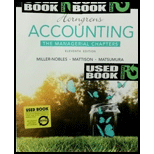
1)
Introduction:
Classes of shares:
• Shares provide partial ownership or a “share” of a corporation. There are two primary classes of shares – Equity
• Equity shares are the class of shares which carry voting rights and equity share holders are the true owners of the company as in the event of dissolution, equity shareholders get last preference in clearing the amounts invested and there is no guarantee of profits will be debited by dividend on an annual basis.
• Preference shares are the class of shares which do not carry voting rights and in the event of dissolution, preference shareholders get first preference in clearing the amounts invested and there is usually guarantee of profits will be debited by dividend on an annual basis.Convertible Preference shares are preference shares that carry the option to be converted into equity shares after certain duration.
Journal Entries
- Journal entries are the first step in recording financial transactions and preparation of financial statements.
- These represent the impact of the financial transaction and demonstrate the effect on the accounts impacted in the form of debits and credits.
- Assets and expenses have debit balances and Liabilities and Incomes have credit balances and according to the business transaction, the accounts are appropriately debited will be credited by credited to reflect the effect of business transactions and events.
To Prepare:
Record of transactions in
2)
Introduction:
Statement of Retained Earnings
• Statement of Retained Earnings is a reconciliatory statement prepared to track the changes in the net balance of retained earnings.
• Statement of Retained Earnings seeks to reconcile the difference between the opening and closing balance of the retained earnings.
• The statement records the opening balance, net income for the year, dividends paid and closing balance of the retained earnings for the reporting period.
To Prepare:
Statement of Retained Earnings
3)
Introduction:
Statement of
• An essential element of the
• When shares are issued, the par value is recorded in the Paid in capital account and if shares are issued at a price greater than the par value, they are said to be issued at a premium. This premium on issue is recorded in the Excess of Paid in Capital over Par value account.
• Retained earnings are the balance of net income for the period after deduction of operating and revenue expenses.
To Prepare:
Statement of Stockholders equity
Want to see the full answer?
Check out a sample textbook solution
Chapter 13 Solutions
Horngren's Accounting
- Hello tutor solve this question accountingarrow_forwardI need help with this problem and accounting questionarrow_forwardJackson's Automotive has total assets of $300,000, a debt-equity ratio of 0.50, and net income of $24,000. What is the return on equity? A) 8.70 percent B) 9.50 percent C) 12.80 percent D) 11.30 percent E) 10.20 percentarrow_forward
- Which of the following is the most appropriate way to display liabilities on the balance sheet? a. alphabetically by payee b. relative likelihood of payment c. nearness to maturity d. All of these answer choices are correct.arrow_forwardCan you help me with accounting questionsarrow_forwardFor which of the following would year-end accrual of a current liability be optional? a. Current portion of a long-term lease obligation that comes due next year b. A declared property dividend c. Sick pay benefits that accumulate but do not vest d. Short-term debt that is being refinanced on a long-term basisarrow_forward
- Quick answer of this accounting questionsarrow_forwardSwifty Supply Co. has the following transactions related to notes receivable during the last 2 months of 2027. The company does not make entries to accrue interest except at December 31. Nov. 1 Loaned $30,000 cash to Manny Lopez on a 12 month, 10% note. Dec. 11 Sold goods to Ralph Kremer, Inc., receiving a $85,500, 90-day, 8% note. 16 Received a $87,840, 180 day. 10% note to settle an open account from Joe Fernetti. 31 Accrued interest revenue on all notes receivable. (a) Journalize the transactions for Swifty Supply Co. (Ignore entries for cost of goods sold.) (Credit account titles are automatically indented when amount is entered. Do not indent manually. Use 360 days for cal in the order presented in the problem. List all debit entries before credit entries.) Date Account Titles and Explanation Debit Creditarrow_forwardHi expert please give me answer general accounting questionarrow_forward

 AccountingAccountingISBN:9781337272094Author:WARREN, Carl S., Reeve, James M., Duchac, Jonathan E.Publisher:Cengage Learning,
AccountingAccountingISBN:9781337272094Author:WARREN, Carl S., Reeve, James M., Duchac, Jonathan E.Publisher:Cengage Learning, Accounting Information SystemsAccountingISBN:9781337619202Author:Hall, James A.Publisher:Cengage Learning,
Accounting Information SystemsAccountingISBN:9781337619202Author:Hall, James A.Publisher:Cengage Learning, Horngren's Cost Accounting: A Managerial Emphasis...AccountingISBN:9780134475585Author:Srikant M. Datar, Madhav V. RajanPublisher:PEARSON
Horngren's Cost Accounting: A Managerial Emphasis...AccountingISBN:9780134475585Author:Srikant M. Datar, Madhav V. RajanPublisher:PEARSON Intermediate AccountingAccountingISBN:9781259722660Author:J. David Spiceland, Mark W. Nelson, Wayne M ThomasPublisher:McGraw-Hill Education
Intermediate AccountingAccountingISBN:9781259722660Author:J. David Spiceland, Mark W. Nelson, Wayne M ThomasPublisher:McGraw-Hill Education Financial and Managerial AccountingAccountingISBN:9781259726705Author:John J Wild, Ken W. Shaw, Barbara Chiappetta Fundamental Accounting PrinciplesPublisher:McGraw-Hill Education
Financial and Managerial AccountingAccountingISBN:9781259726705Author:John J Wild, Ken W. Shaw, Barbara Chiappetta Fundamental Accounting PrinciplesPublisher:McGraw-Hill Education





